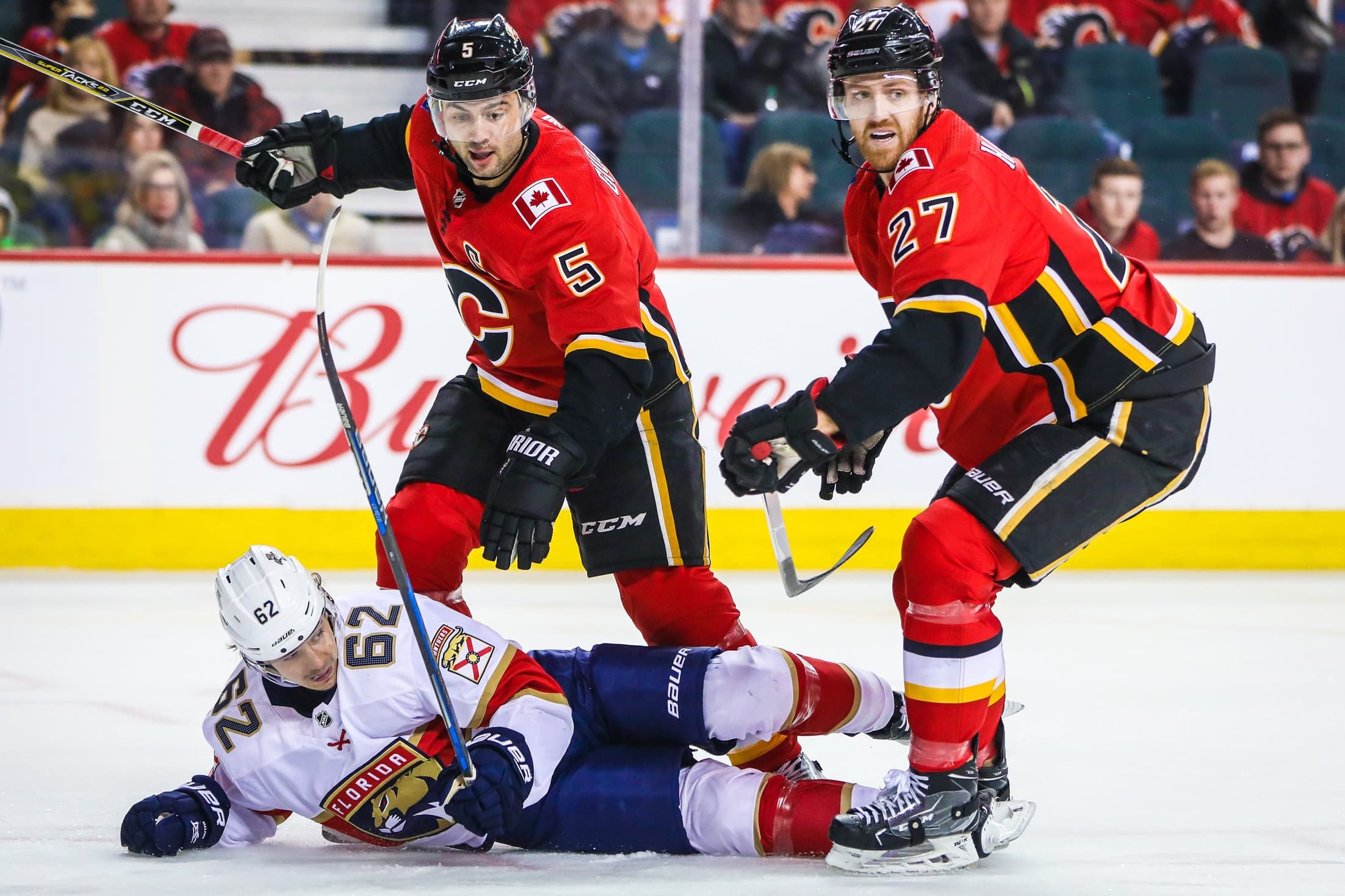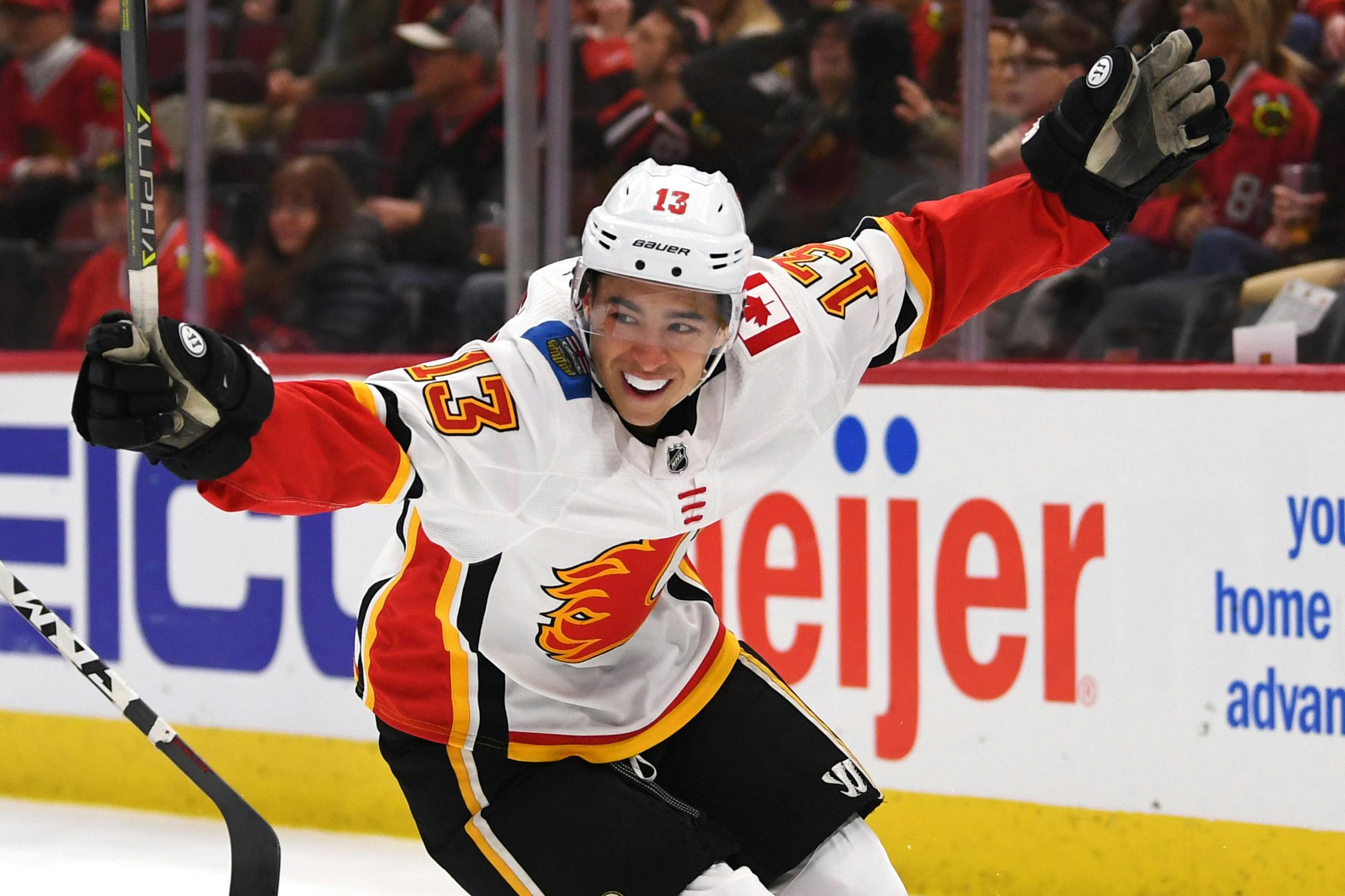Five positives from a disastrous Flames season

Now that a little time has passed since one of the most disappointing Flames regular seasons in recent memory came to a close, maybe people are ready to look at a few positives.
As the internal autopsy continues amid the excitement of the first round of the playoffs, there are reasons to be optimistic about how things played out. Difficult to contemplate after an 84-point season that left the Flames in 11th place in the Western Conference — just one spot and six points ahead of their provincial rival in Edmonton — but the lens exists if you look hard enough.
5. Some successful late-season tryouts
Yes, it’s probably a little premature to get overly excited about prospects like Spencer Foo and Rasmus Andersson, who played significant minutes and looked strong in the final few games of the regular season. Mostly because there is no pressure and a lack of intensity in games with no meaning to either team as they play out the string.
However, it not only gave both some confidence heading into the summer, it allowed the coaches and management types some longer looks at the young guys against tougher competition than they were getting in the American Hockey League.
Foo scored in back-to-back games to close out the season and looks like he could certainly add some firepower to a bottom six that struggled this season in the NHL. Andersson was solid even while anchored with Matt Bartkowski on his left side.
In the fall, Andersson could make the jump the way Brett Kulak did this season. His presence and those of top blueline prospects like Adam Fox and Juuso Valimaki could help the Flames make a significant off-season move to bolster the offence.
The four-goal finale from Mark Jankowski was also a nice exclamation point on a promising rookie season.
4. The defensive dynamic duo
You can argue all you want about splitting the top defensive pairing of Dougie Hamilton and Mark Giordano to try to end the struggles of TJ Brodie and Travis Hamonic, but it’s tough to separate a duo as dominant as Hamilton and Giordano.
They were the league’s best unit on the blueline when it came to possession this year and despite the many issues people seem to take with Hamilton’s play, he was the key to a stronger second half success rate on the power play and led the league with 17 goals from the blueline — a total he shared with Victor Hedman and Ivan Provorov.
Giordano will be 35 this year and has seen a bit of a drop in offensive production the past couple of years but only missed out on the 40-point plateau by two points this year and one point the previous season, so his totals are still very respectable.
The Flames captain is also one of the biggest reasons the team’s penalty kill was ranked among the top 10 this year with an 81.8 percent success rate.
These guys may get some early looks apart next year but it’s more likely the bottom four are shuffled for chemistry and depth than it is the top pairing will be broken up. And any Hamilton trade talk should be scuttled immediately — that’s not a scenario the Flames could win.
3. Johnny Gaudreau’s scoring prowess
Only 20 NHLers who played more than 65 games this season cracked the point-per-game pace and Johnny Gaudreau finished in a tie for 14th with 1.05 per contest. His 60 assists were matched or bettered by only seven others this season, a mark that has been hit only nine times in the previous four seasons since the lockout-shortened 2012-13 campaign.

Patrick Gorski-USA TODAY Sports
It’s also a lofty legacy left by only seven other players in Flames history — Bob MacMillan, Kent Nilsson, Sergei Makarov, Al MacInnis, Gary Suter, Doug Gilmour and Theoren Fleury.
Gaudreau’s consistency was pretty incredible right up to the team’s disappointing finish. He scored at least a point in all but three of his first 22 games. The longest drought until late February and early March was a three-game pointless span at the end of November.
Motivated to prove his three-point finish over the final eight games wasn’t for a lack of fortitude, Gaudreau and a repaired Sean Monahan should be back to their dynamic duo status next season.
2. The pre-injury goaltending of Mike Smith
If you’re looking at what ifs for the Flames this year, the most relevant ask when it comes to the playoff picture is “what if Mike Smith didn’t get hurt?”
The answer isn’t a lock because there are plenty of reasons the Flames missed out on the postseason (secondary scoring, defensive lapses, that gawd-awful power play) but there is no denying the Bad Break in Brooklyn set a course for the team from which it never recovered. They went 6-5-2 without Smith, but worse was how they played when he finally returned to action. After an inspired victory in his first game back, they went 1-6-0 the rest of the way with Smith putting up an .880 save percentage in his final eight appearances. He later talked about wanting to be the saviour and that his mental state probably wasn’t up to par in coming back… but this is a positive piece, so let’s look at what Smith had done prior to the injury.
The 36-year-old went 23-16-6 with a .921 save percentage and had been making timely saves to help mask some of the team’s other deficiencies. He was a workhorse who showed no signs of fatigue or lack of focus while starting 45 of the team’s first 56 contests.
Smith was the team’s MVP.
So what if Mike Smith didn’t get hurt? The city of Calgary could still be watching its team playing right now.
With another year on his current contract, Smith offers security at a position that is of critical importance to a team that has many of the key ingredients for a quick turnaround.
1. The ascent into the elite by Matthew Tkachuk
It didn’t take long for his dad Keith Tkachuk to make his mark on the NHL, and Matthew’s offensive output of 24 goals and 49 points to set new highs in his second season is just a small part of the package that arguably makes the 20-year-old winger the most important piece of the Flames’ young core.
The 49 points came in just 68 games and the improvement in production saw Tkachuk bump his points-per-game from .632 as a rookie to .721 in his second year. His dad leapt from 51 points in his first full season to 80 in 83 games as a sophomore, and at least flirted with a point-per-game pace for the next decade of his career.
With more offensively gifted linemates — say, a second line on a true Stanley Cup contender— there’s little doubt the younger Tkachuk could mirror those kinds of numbers posted by his father. But Matthew’s two-way play, his evolution into a super pest who knows the value of drawing penalties over taking unnecessary ones himself, and his emergence as a young leader who may well find himself the team’s next captain all add up to more than his point production.
If the team followed the kid’s lead on the ice more often, they would never have seemed to lack the inner spirit needed to gut out some tougher wins.
Recent articles from Steve Macfarlane





